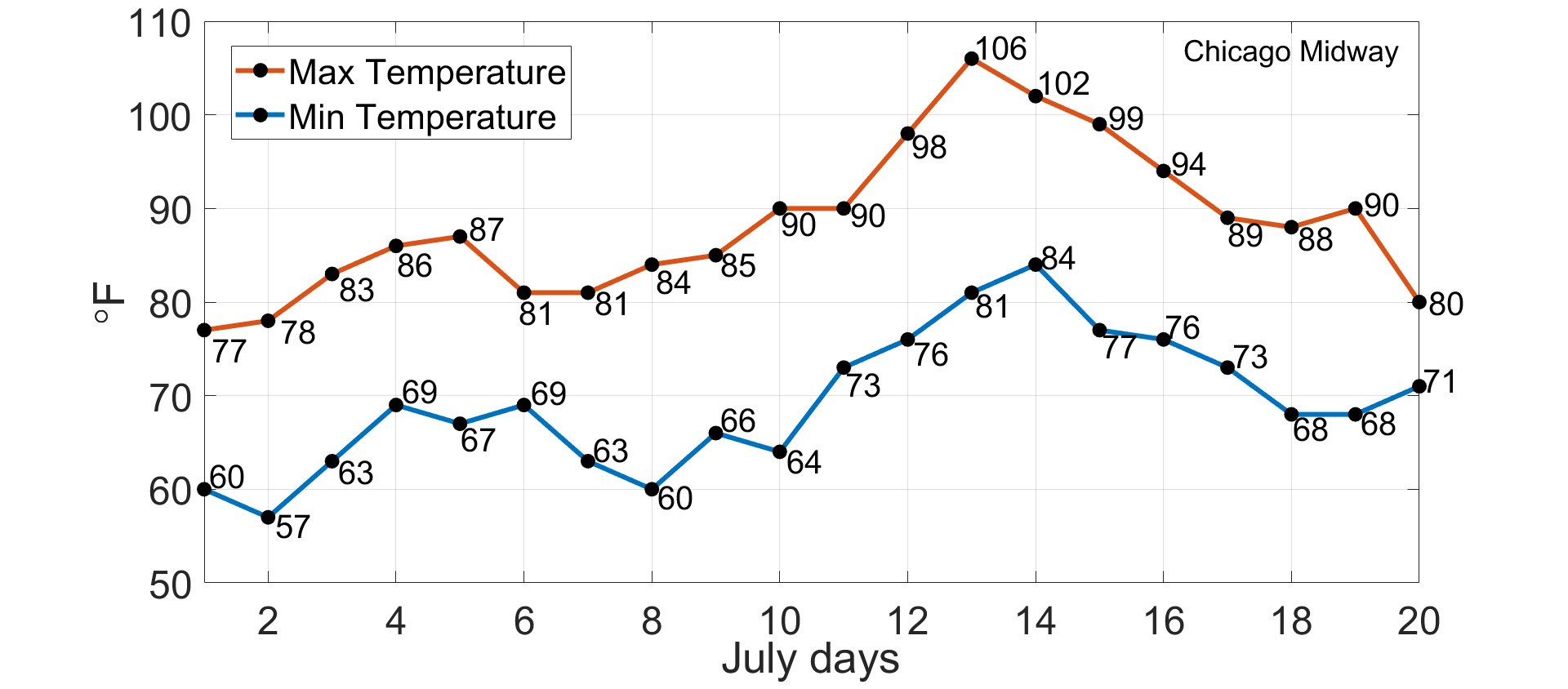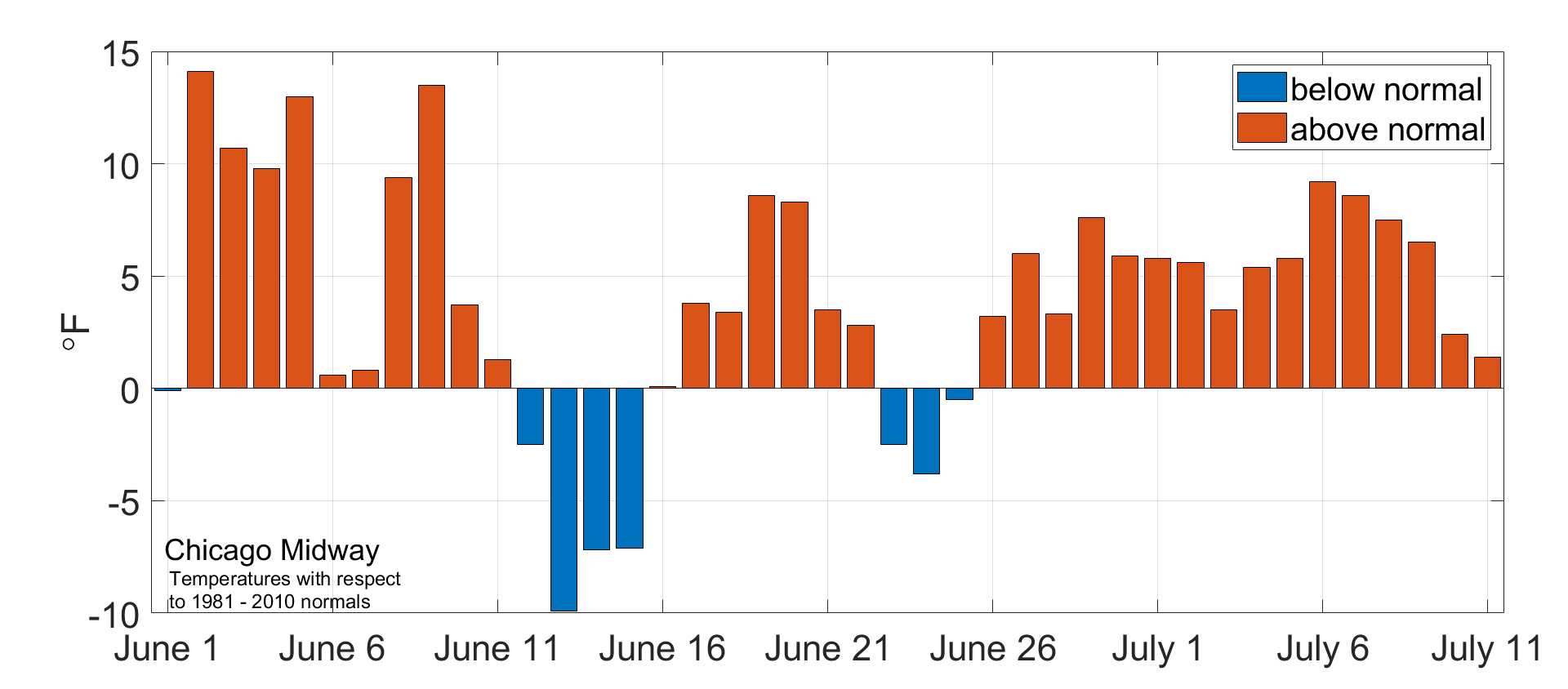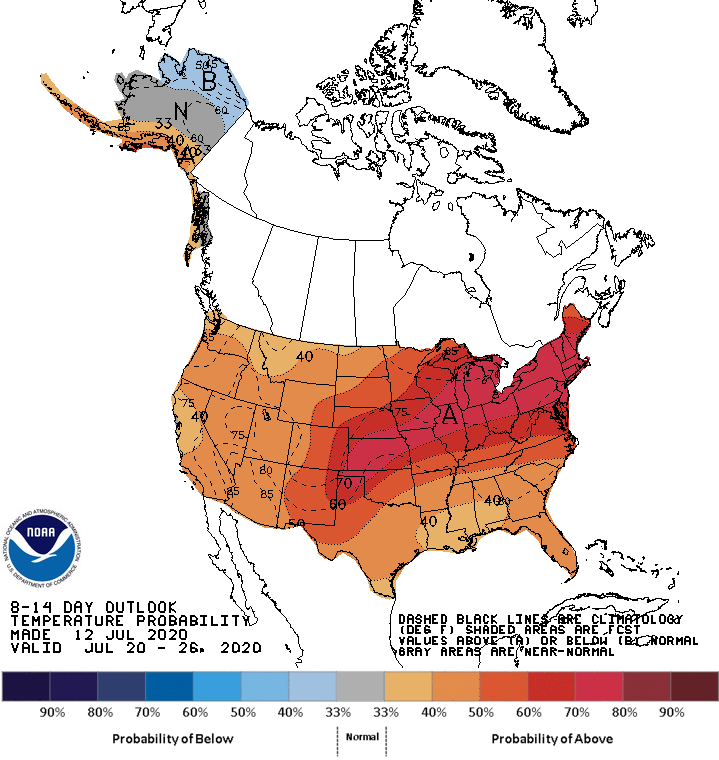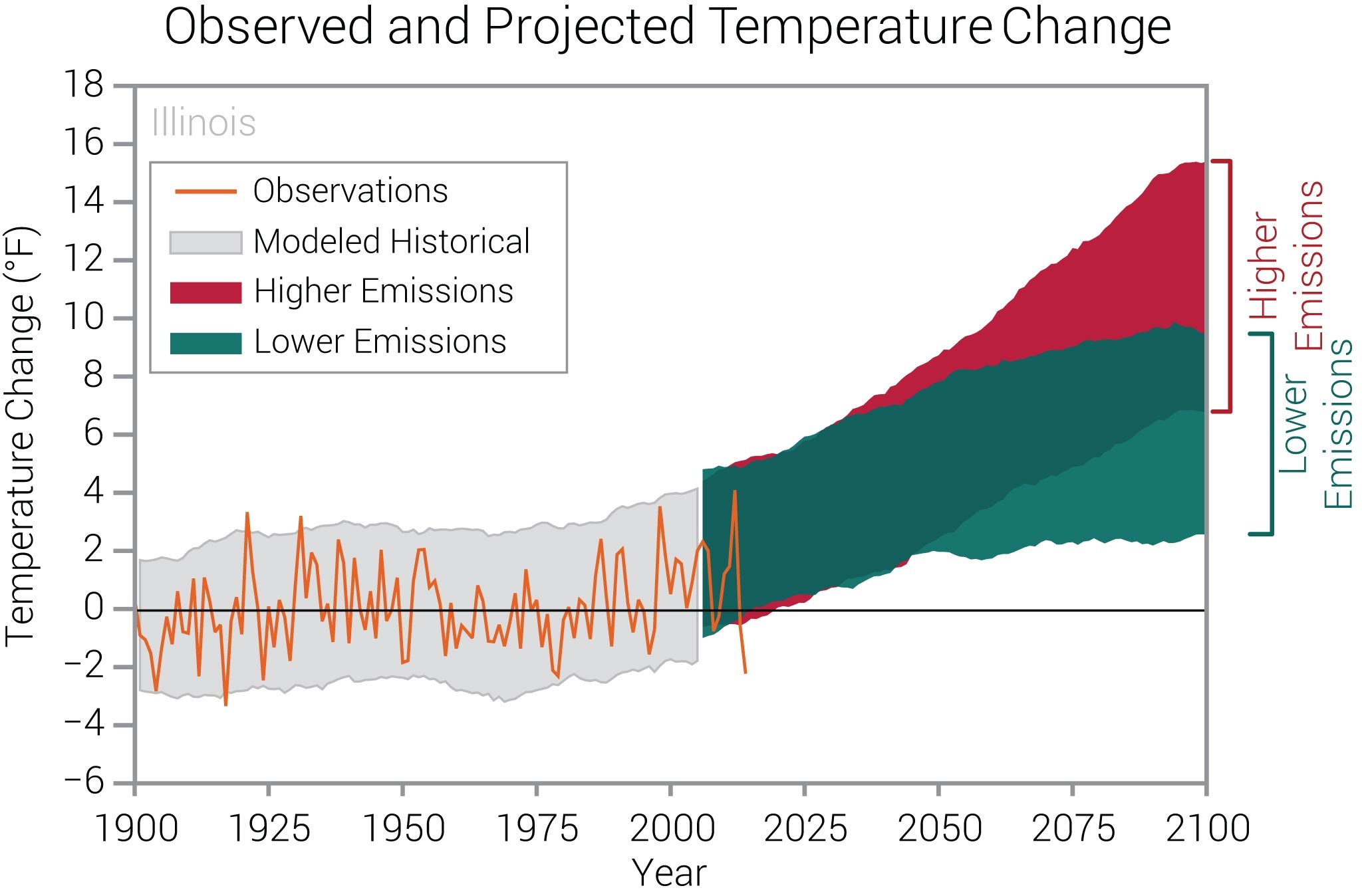This week marks the 25th anniversary of the July 1995 heat wave in Chicago, one of the worst weather-related disasters in Illinois history. The excessive heat and humidity, compounded by social and economic vulnerability, resulted in more than 700 deaths over a five day period.
The chart below shows the daily progression of maximum and minimum temperatures between July 1st and 20th in 1995. Daytime temperatures between July 10th and 16th reached 90 degrees, and over triple digits on the 13th and 14th. Minimum temperatures during this time period were in the 70s and, on two days, the low 80s. The combination of very hot days and very warm nights enhanced heat stress and reduced nighttime recovery. The multiple day duration of the heat wave was another important contributor to excess mortality.
Social and Environmental Factors Contributed to Heat Impacts
The heat wave was made worse by the urban heat island effect, which is caused by the high concentration of buildings and roads in urban areas. These surfaces tend to absorb more heat in the day and result in more heat in the atmosphere at night. Therefore, urban areas usually experience less cooling at night than nearby rural sites.
Deaths attributed to the 1995 heat wave were primarily among elderly, poorer Chicagoans, due to a number of social and economic factors such as lack of access to air conditioning and/or air conditioned cooling centers. In addition, death rates among non-hispanic black Chicagoans were 50% higher than those among non-hispanic white Chicagoans (Whitman et al. 1997), highlighting racial disparities in both risk and vulnerability to extreme heat. Other factors that contributed to the high number of deaths were an inadequate local heat wave warning system, power failures, and inadequate emergency services and hospital facilities.
Current Conditions
This summer so far has also been very warm, although without a heat wave as extreme as 1995. Daily average temperatures in Chicago have been consistently 5 to 10 degrees above normal since the beginning of June, and July 12th was the first day this month with a below normal daily average temperature. Maximum temperatures have mostly been in the mid-80s to low 90s for several weeks. Chicago O’Hare, for example, has experienced 16 days with a daily high temperature of 90 degrees or more since June 1st. This is about twice the to-date average frequency of 90 degree days, and fourth most on record at O’Hare.

The NOAA Climate Prediction Center outlooks indicate strongly elevated chances of above normal temperatures across Illinois persisting for the next four weeks. Although temperatures are not expected to reach the peak levels of the 1995 heat wave, the persistence of our current heat, in combination with high humidity levels, can result in negative human health outcomes without proper precaution.


A Look Forward
According to the NOAA National Centers for Environmental Information Illinois Climate Summary (Frankson et al., 2017, https://statesummaries.ncics.org/chapter/il/), summer temperatures are projected to increase and likely to exceed historical record levels by the middle of the 21st century. The report states that future heat waves in Chicago are likely to be more intense with temperature increases due to climate change.

Given these projected changes, continued and further work is critical to decrease social vulnerability to extreme heat in Chicago, ensuring Chicagoans are resilient to extreme heat now and into the future.
Additional Reading
Changnon, S. A., K. E. Kunkel, and B. C. Reinke, 1996: Impacts and Responses to the 1995 Heat Wave: A Call to Action. Bulletin of the American Meteorological Society, Vol. 77, No. 7, 1497-1506.
Kunkel, K. E., S. A. Changnon, B. C. Reinke, and R. W. Arritt, 1996: The July 1995 Heat Wave in the Midwest: A Climatic Perspective and Critical Weather Factors. Bulletin of the American Meteorological Society, Vol. 77, No. 7, 1507-1518.
References
Frankson, R., K. Kunkel, S. Champion, B. Stewart, D. Easterling, B. Hall, and J.R. Angel, 2017: Illinois State Climate Summary. NOAA Technical Report NESDIS 149-IL, 4 pp.
Whitman, S., G. Good, E.R. Donoghue, N. Benbow, W. Shou, and S. Mou, 1997: Mortality in Chicago attributed to the July 1995 heat wave. American Journal of Public Health, 87, 1515-1518, https://doi.org/10.2105AJPH.87.9.1515.

